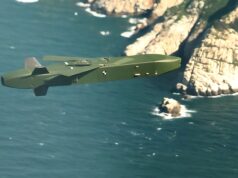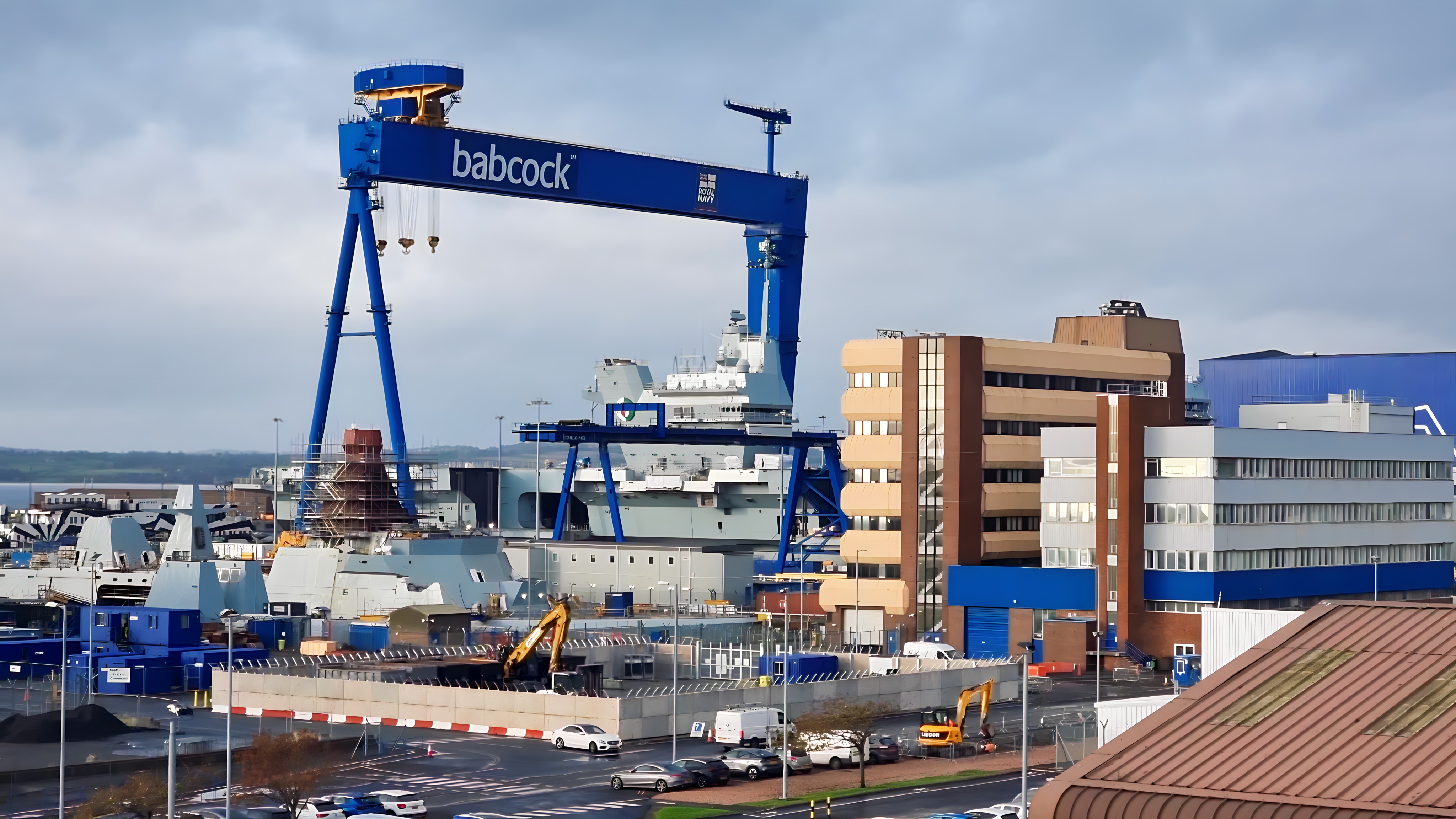The Ministry of Defence has confirmed that alternative locations for the maintenance and repair of the Queen Elizabeth class aircraft carriers are available, should for whatever reason, the Babcock facilities at Rosyth become unavailable.
Please note, readers, that there is no suggestion at all they would be unavailable; I simply thought this was something many of you might be interested in learning.
The clarification came in response to a question raised during the King’s Speech debate on foreign affairs and defence.
In a letter addressed to Lord Empey, Lord Coaker outlined the various levels of maintenance involved in keeping the QEC aircraft carriers operational. The letter explained that “there are several levels of maintenance undertaken at different stages in the operational cycle for the QEC aircraft carriers.” These range from routine upkeep performed by the ship’s staff while at sea to more complex repairs, often requiring contractor support.
For intermediate maintenance that exceeds the capacity of the ship’s crew, contractors, including BAE Systems and their sub-contractors, play a key role. “An intermediate level of maintenance (beyond ship’s staff capacity or skills) is undertaken with Contractor support, normally alongside and afloat (not dry dock) in the ship’s base port, HMNB Portsmouth,” Lord Coaker explained. This maintenance ensures that essential tasks, which do not require dry-docking, can be performed without disrupting the ship’s operational schedule.
The most critical stage of maintenance is the routine dry-docking that the aircraft carriers undergo every six years to maintain their safety certification. This process, according to Lord Coaker, is vital for completing tasks that cannot be performed while the ships are afloat, such as repairs to underwater hull valves and shaft bearings. “During these periods, maintenance is focussed on elements that cannot be maintained whilst afloat and those which are mandated to achieve Lloyds Register Classification Society requirements such as underwater hull valves and shaft bearings,” he said.
Currently, Babcock’s Rosyth facility is contracted to handle dry-docking until 2030. However, Lord Coaker stressed that the Ministry of Defence has contingency plans in place. “I can assure you that if Babcock Rosyth facilities were unavailable for whatever reason, and an urgent requirement arose that required an alternative location for dry-docking the QEC aircraft carriers, Defence has the resilience to service carriers elsewhere.”
Potential alternatives include commercial dry-docking facilities within the UK and overseas, as well as sites provided by the UK’s allies and partners. This assurance provides flexibility for the Royal Navy and addresses concerns about the ability to maintain the QEC carriers in the event of disruptions at Rosyth.
BAE Systems, under the Future Management Support Programme (FMSP), is responsible for the ongoing maintenance of the carriers until 2028, ensuring that regular upkeep continues. However, Lord Coaker’s letter was clear that dry-docking is managed under a separate contract with Babcock, which was secured through open competition and remains in place until the end of the decade.













Sorry for the loaded response but it’s a good point George. The bean-counters seem to have a lot of clout these days, to the extent we are losing ‘system resilience’. Eggs in one basket is a cliche that comes to mind. Of course, is it wise to have 5 (arbitrary) different ship yards all capable of taking a carrier but not in use, maybe not, we’re not at war (yet) but you’d like to think plans were being put in place at least to allow for ‘heavy’ maintenance at different yards. Same argument for the SSNs/SSBNs. On the subject of ‘system resilience’, Lossiemouth comes to mind. It was raised on a chat here a few days ago. Almost half the Typhoon fleet, all P8s and all E-7s on one airbase. I’d like to think our intelligence services were sufficiently well connected that we could avoid any Pearl Harbour. I often wonder, if Russia (or China) were performing “an exercise” in the North Sea, as Russia were over the Ukrainian border in 2021/22, could we disperse sufficiently in time?
If a major power is going to attack you with no warning you’re always going to have your eggs in one basket. Dispersal doesn’t work anymore for aircraft. Only keeping them in hardened shelters with an air defence and even this is limited in its effectiveness. No military any where on planet earth outside of maybe Israel has air defences switched on during peace time on an airfield as air defences have a nasty habit of shooting down friendly aircraft. You are much more likely to accidentally shoot down your own plane by than suffer a sneak attack.
Lastly the UK has an at sea deterrent and is a member of NATO for this exact reason. Russia could take out every British aircraft in one go and it would make zero difference to our response which would either be Nuclear solo strike or as part of a NATO coalition.
Getting to sea from both Rosyth and Devonport for ships as big as those mentioned, is hampered by tides: Devonport’s Plymouth Sound negotiation and the Forth Bridge out of Rosyth. What the other RNB’s have, I am unsure. However, I doubt that the RN would be caught napping as the USN was at Pearl.
I hope you’re right Roland.
The RN is not a stand-alone fighting force as has been demonstrated throughout the inception and operation of NATO. Therefore, even if we have ships in dock, we have our allies upon which to rely. An attack on one member is an attack on all.
At least, that’s the plan. Although I wouldn’t rely on the Americans to follow any plan but their own.
Roland that was disrespectful saying about Pearl Harbour the uk just don’t care about any branch of force in the uk and now labour is in the country is going down the pan
America getting involved with the UK during WWII could not have happened without the attack by the Japanese Empire; thus PH. My understanding is that Churchill pleaded with Roosevelt for help against Hitler but was refused. Thus the USA had Pearl Harbour to present the excuse for it to get involved. What our current government’s current effect on anything to do with Pearl Harbour is irrelevant. Incidentally, if you believe that our puppet government is actually in control of the UK’s military security, think again.
What Royal Navy are you referring to? They barely have a handful of ships left. Devonport Dockyard is pretty much empty.
Perhaps I didn’t make myself clear. Britain is part of NATO. It therefore does not need the size of the navy it once required during both World Wars, the RN was a strand-alone force up against Germany, especially during WWII. Besides that, the vast improvement in armaments, including an immense network of military satellites and guided weaponry has pretty much reduced the requirements for large fleets. I trust that this explanation will answer your concerns.
You were quite clear, In order to be part of something you need to have assets to contribute to it. In 2019 when the Iranians boarded a British tanker in the Gulf the media proudly spouted off about HMS Monmouth at the time being one of the Royal Navy’s 13 type 23 frigates, what it failed to mention at the time was that 10 of those 13 frigates were at that time in Devonport either preparing for disposal, in dock or alongside in maintenance since then more have been either sold off or scrapped. Since the only other large vessels they have are the rather poor performing Type 45’s that means that the mighty RN had about 5 substantial warships deployed at that time. It shows how depleted our Navy is when they have to include P45 patrol boats as warships! Just to boost numbers. A Navy with 240 serving captains and less than 20 actual ships something not quite right there methinks.
But yes we can rely on everyone else to protect us until one day they cannot or will not.
Clearly a smart thing to have available be there issues or both Carriers require work at same time.
is Gibraltar not an option the dry docks there are big one was able to fit battle ships in.
Lord Empty head is asking because the dry dock in Belfast is still the largest in Europe.
I’m not sure what state the rest of the facilities are in, but I’m guessing contractors would be moved from Scotland to Belfast to complete the work, much like they will be moved from Spain to Belfast to complete the FSS ships.
I remember looking up the sizes during a discussion on the refit of HMS Medway. And yes, the Gib drydocks are big, but not that big.
What about H&w in Belfast
As Expat mentioned elsewhere in the thread, before Rosyth was chosen, Navy Lookout (or Save the Royal Navy as it was called back then) did a piece on half a dozen UK dry docks that could accommodate carriers. The runners and riders were:
Rosyth (Forth), Harland and Wolff (Belfast) Inchgreen (Clyde), Able Seaton (Teeside), Camell Laird (Birkenhead), A new dry dock at Portmouth.
A Warships article said that 2 of the old docks at Portsmouth were potential for QE, but either one would need a major widening/rebuilding, which could cost up to £500m.
QE’s are considerably larger than Battleships.
Queen Elizabeth (R08):
Displacement: 65,000t
Length: 284m
Width: 39m (73 at the flight deck)
Queen Elizabeth (00):
Displacement: 33,000t
Length: 190m
Width: 27m
I think the largest dock is about 20m too short for a QE, but happy to be corrected.
i see you are wise and better informed than me, the large dock at Gibraltar i understand could fit HMS Hood,
I believe that the only other dry dock in the UK mainland big enough to take a QE class carrier is the one at Inch Green Port Glasgow. Although the dock is serviceable, the workshops are long gone. To it’s advantage, it doesn’t have access issues, unlike Rosyth.
Able’s on Teeside could fit two Ford class carriers side by side. No 5 at Camel Laird’s on Birkehead could just squeeze a QE class in, in an emergency.
The dry dock is too close to the boundary wall at Cammell Laird. The MOD would have to close roads, access to businesses, and homes to provide an extra security layer.
Hood and Vanguard are still a good 25-30m shorter than a QE carrier, and even for them it would have been a very tight squeeze.
Yeah but too small for QE aircraft carrier
This is another flight of fantasy but given the timelines monetary issues would be the killer. Get on with the Centre Port project. Include a naval base with dry docks and covered ones also.
How many dry docks are there (military, commercial, here or abroad) that can accommodate ships of their size?
So the Scots know that they won’t keep the RN contract if the SNP win Independence
We could always use the one in France if the Naval Treaty is any use. What about others in Euroland they build stonking great cruise liners, far larger than the QE’s. What did we use for the old QE2 liner?
Take a look at Maltas China dry dock
Navy lookout ran a good article on dry docking the carriers. They concluded that extending the dry dock at Portsmouth was a viable option over-the-counter life time of the carriers as the invest over 50 years was tiny like 5m a carrier but there was savings as most other maintenance would be done in Portsmouth so really way less than 5m a year and strategically created a second dry dock. But problem is political class can’t think beyond 50 days let alone understand long term benefits of a defence investment stretching 50 years.
This country has for decades destroyed it’s maritime infrastructure with shipyard and dry docks filled in. where are the real alternative areas – All abroad as Belfast will have an FSS in it and the naval dockyards are all too small. Well done MOD and Politian’s another oversight!!!!!!!!!!
The Able Seaton Port dry dock and facility on the Tees could take two QE carriers side by side, although it is currently mainly used for oil rig decommissioning. 376m x 233m x12.5m
Yes huge White Elephants that are too big for a Navy which is little more now than a flotilla of ageing frigates and a few destroyers which have never been upto scratch. Good luck throwing more money into the aircraft carrier black hole.
“Lloyds Register Classification Society requirements…” Apart from good practice and common sense, would all UK and other military vessels have these requirements as mandatory? Could the MoD absolve themselves simply because they are military? Just asking…